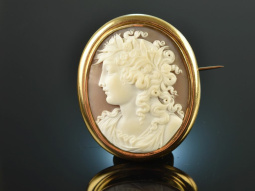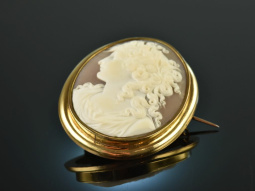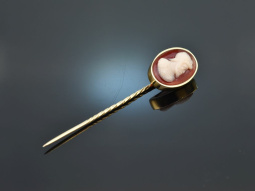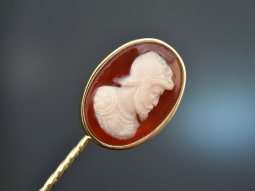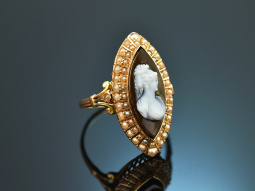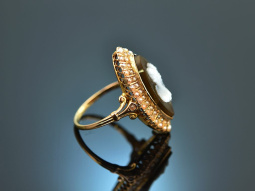Cameo & Intaglio
As early as the Renaissance, with its characteristic turn towards the art of antiquity, antique cameos and intaglios became the focus of the collections, cabinets, treasuries and art chambers of the European aristocracy. Glyptics – the art of cutting gems – soon became one of the most appreciated and respected European art movements of the 15th and 16th centuries. This resulted in perfectly shaped pieces of jewellery that still enjoy great popularity today. Find out more »
Carved gems and their history
The term intaglio refers to a deeply cut stone. A cameo forms the equally artistic object – a sublime stone cut in relief. The term gem is to be understood as a collective term for engraved gemstones in general.
Intaglio, cameos and gemstone jewellery experienced a revival at the time of classicism at the end of the 18th century and the first half of the 19th century. People now endeavoured to copy gems from antiquity or the Renaissance. Soon, however, stone carvers also began to create their own motifs in the style of antiquity, drawing inspiration from the literature of classical mythology and Ovid's Metamorphoses.
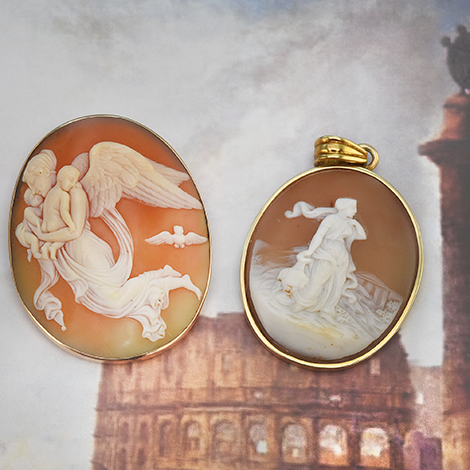
Cameos and intaglios as souvenirs of the Grand Tour
The emerging enthusiasm and general turn to classical antiquity, which gripped the aristocracy and the upper classes at the time, closely linked cameos and intaglios with a very special tradition of the time, namely the "Grand Tour"; a journey of the upper classes to archaeological sites in Greece and, above all, Italy, where culturally-minded people travelled to study the architecture and works of art of antiquity. The best cameo cutters of the time also worked in Italy and so it became obligatory for educated travellers to acquire fine-cut cameos or intaglios as a souvenir. Once back home, these either became part of a fine collection of gems or the artistic objects were further crafted into high-quality pieces of jewellery.
What are gems made of?
Most often, the small works of art were cut from shells, which, thanks to their natural layering, offer the best conditions for depicting the desired scenes in high contrast. Carnelian, onyx, lapis lazuli and layered agates were also popular, but were more difficult to work with due to their hardness.
Gems and cameos were also made from glass paste and so-called lava stone. These lava cameos describe an artificially produced, carvable material made of powdered lava and admixtures of glue. This mixture could be processed excellently and resulted in extremely attractive works of art that are still in great demand today. The only disadvantage: Lava cameos are extremely fragile and should be worn with care!
Halsbandaffaire – your expert for cameos and intaglio
With us you will find a select range of high-quality antique gems and cameos that have been crafted into wonderful pieces of jewellery. These historical objects depict the jewellery tradition of a very special era and charmingly tell of the close connection between jewellery and history.
